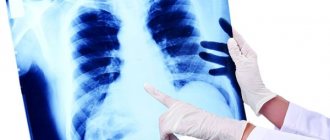Share
The real scourge of the 21st century is casual sex. It's no secret that one night together with a partner (or partner) can transmit diseases that will poison the rest of your life. The list of such “lifelong” diseases also includes syphilis, which is classified as a sexually transmitted disease.
Not many people know about this disease, but the most burning question that young people ask is: “How long does it take for syphilis to appear after infection?” We will answer it and also talk about this terrible disease in the article.
Syphilis is classified as a chronic disease. Its course is divided into two periods: exacerbation and remission, which alternately replace each other. There are four periods in total: incubation, primary, secondary, and then tertiary.
Throughout all stages, the disease affects not only the genitals, but the body as a whole. Syphilis occurs in several stages, there are only three. But at each of them the disease acquires even more destructive power.
Characteristics of the disease. Signs of syphilis
The causative agent is a special type of bacterium - Treponema pallidum (also known as a spirochete). After triponema enters the body, it immediately begins to “conquer” a new location, i.e. its spread occurs immediately after infection (sexual contact). It is important to remember that this disease is contagious, so you can get this bacterium from sharing common objects. At the same time, a woman can infect sexual partners at any time, even during the incubation period.
Let us look at the signs that occur throughout the course of the disease:
1. The appearance of an ulcer (chancre) on the surface of the genital organs. This can be classified as “the first signs of bacterial development). 2. Lethargy, fatigue. 3. Rash that looks like spots or nodules. 4. Reaction of the lymphatic system. 5. Increase in temperature. The lymph nodes become enlarged as the immune system becomes active. 6. Painful sensations in the body. 7. The appearance of tubercles under the skin - syphilides, which develop into ulcers. They are not able to heal, so the destruction of tissues, organs and bones occurs irreversibly.
It is especially worth noting those symptoms and signs of syphilis that pose a threat to life:
1. Violation of the integrity of the mucous membrane in the nose or oral cavity. 2. The occurrence of tumors in soft tissue areas.
Rash with syphilis on the genitals in the secondary period
After 2 months or a little more, a rash may appear on the genitals.
It also occurs in other parts of the body.
This stage of the disease is characterized by a wavy course.
The rash can vary.
But it has common features.
- Initially, a large number of morphological elements appear.
But with each subsequent exacerbation there are fewer and fewer of them.
- The patient has no subjective sensations.
He does not feel itching, pain or burning.
- The rash develops slowly and imperceptibly.
This distinguishes syphilis from many other infections, in which multiple rashes appear literally overnight.
- Both true and false polymorphism are observed simultaneously.
That is, the rashes are at different stages of development.
And besides, they are different in nature.
The same person may have papules, spots, roseola, pustules, etc. on the genitals.
- There is no proliferation or fusion of rash elements.
The exception is when another infection occurs.
Or, when the patient carries out irrational treatment of secondary syphilis on the genitals, trying to influence them with irritating substances.
- Spontaneous disappearance.
Whether there is treatment or not, the rash disappears after a while.
- The resolution of inflammatory elements begins from the center.
- There are usually no scars left.
They occur only in rare cases with ulceration of syphilide.
- There is no elevated body temperature during the period of rash appearance.
This makes syphilis rashes different from herpes and other viral or bacterial infections.
- In most cases, the rash goes away quickly with antibiotic therapy.
Secondary period of the disease
Secondary syphilis develops 2 months after the formation of chancre and is characterized by rashes on the skin and mucous membranes. The following types of rash are distinguished :
- Syphilitic roseola - flat spots, 0.5 to 1 cm in diameter, pink or pale pink, localized on the skin of the trunk and limbs. The rash does not manifest itself with accompanying symptoms - there is no itching, peeling, or burning.
- Lenticular syphilide - round, dense, copper-red elements that rise above the skin.
- Meliary syphilides are small, millet grain-sized, dense brownish papules localized on the skin of the body. They usually gather in groups, forming rings, arcs and plaques.
- Coin-shaped syphilides are large spots, up to 2.5 cm in diameter, red or brown in color, slightly raised above the skin.
- Weeping syphilide is wet, round, eroded spots that form in the groin area and axillary folds. Accompanied by moderate itching.
- Condylomas lata are soft, pale pink papules that rise above the skin and resemble papillomas in appearance. Localized in the perineum and around the mouth.
- Pustular syphilide - small pustular papules with a yellowish crust at the end. Localized on the trunk, limbs and face.
All elements of the rash, with the exception of roseola, have clear boundaries and are located randomly. Most often, the rash affects the skin of the torso, but can occur on the scalp, face, neck and palms.
After 2–3 weeks, the rash goes away suddenly , leaving no spots or scars. The secondary period of syphilis lasts up to 5 years, during which time rashes periodically appear, which disappear on their own after some time.
The first wave of the rash is characterized by a brighter course: multiple skin lesions, the elements are brightly colored. Subsequently, the papules have darker pigmentation and are localized in individual areas of the skin, often forming in groups.
Photos of secondary syphilis in women
What does syphilis look like on the genitals in the tertiary period
In the tertiary period, gummas and tubercles are formed.
They appear only a few years after infection.
Previously, gummas formed only against the background of HIV.
Then they can form already in the first year of the disease.
Syphilitic gumma may appear on the head of the penis.
It has a round shape.
The depth is large - significantly greater than that of primary syphiloma.
An ulcer with steep edges appears.
It is surrounded by a shaft of inflammatory infiltrate.
Read also: Chancroid
At the bottom of the ulceration there is necrotic tissue.
Pus is released from the gumma.
Tuberous syphilide can also form on the genitals.
Its lesions look like rings.
They have a limited edge in the form of a roller.
The tubercles may ulcerate.
Complications of chancroid
Complications of primary syphiloma in most cases are associated with the addition of another infection. As a result, patients notice the appearance of additional symptoms: pain, increased swelling, and the appearance of pus in the area of the chancre. Among the factors contributing to the addition of a secondary infection:
- injury to chancre;
- violation of personal hygiene rules;
- the presence of diseases that suppress the immune system (tuberculosis, diabetes).
The presence of such provoking factors leads to the development of the following complications in women:
- bartholinitis;
- vaginitis;
- endocervicitis.
Among the complications of chancroid in men:
- balanitis and balanoposthitis (inflammation of the head and foreskin);
- phimosis (complete closure of the head);
- paraphimosis (pressure of the head by the inflamed foreskin);
- gangrenization (in severe cases).
Differential diagnosis for syphilis
In case of primary syphiloma, it is necessary to differentiate (distinguish) syphilis on the genital organs from the following pathologies:
- Erosion of traumatic origin.
It usually has a linear shape rather than a round one.
It is painful, unlike chancre.
It heals quickly, while syphilitic erosion lasts for weeks.
Anamnesis data about the trauma suffered help in diagnosis.
- Balanoposthitis.
There are many erosions, but with syphilis there is usually only one.
They have an irregular shape.
The head of the penis itself swells, which rarely happens with a syphilitic infection.
There is no compaction at the base of the ulceration.
Subjective sensations are present, but with syphilis they are not.
Discharge of pus is characteristic.
In this case, the lymph nodes usually do not enlarge, but with syphilitic lesions of the genital organs this always happens.
- Genital herpes.
Primary syphiloma can be confused with this disease if multiple erosions appear.
Then they can merge with each other, imitating chancre.
This occurs in approximately 5% of patients with herpes infection.
The similarity is enhanced by:
- localization
- medical history (sexual transmission)
But with herpes there is usually pain.
Erosion does not form immediately, but is formed from bubbles.
They have an irregular shape if they merge with each other.
Often there are symptoms of intoxication (fever), which are not present with syphilis.
- Scabies ecthyma.
This is a bacterial complication of scabies.
Scabies itself is a parasitic disease - it is caused by a mite.
Main differences:
- absence of infiltration at the base of the ulcer
- there is purulent discharge
- there is itching
- lymphadenitis is usually absent
- Chancriform pyoderma.
Indistinguishable from syphilitic chancre.
Differential diagnosis is possible only by laboratory methods.
- Acute vulvar ulcer.
Usually occurs without any connection with intimate life.
Accompanied by high body temperature.
There may be pain when urinating.
Ulcers are multiple, but with syphilis it is usually single.
The edges of the ulcer are sharply cut, and with a syphilitic infection they are smooth.
- Erythroplakia of Keira.
This is a precancerous disease.
Appears on the penis or vulva.
A plaque or spot appears.
Its surface is velvety and red.
The pathology has a very slow course.
There is a constant peripheral growth of erosion or plaque, which is not the case with syphilis.
- Squamous cell carcinoma of the skin of the penis.
Often develops against the background of Queyra's erythroplakia.
A painless spot appears with an ulcer in the center.
Gradually it transforms into infiltration.
This formation is very dense.
The bottom is bleeding.
Papillomas may be located nearby, as they are a risk factor for squamous cell skin cancer.
How long does it take for the disease to appear?
After contact with the carrier and entry into the body, the bacteria quickly penetrate unaffected mucous membranes or microscopic skin abrasions and within a few hours end up in the lymphatic system and bloodstream, contributing to the development of a systemic infection.
The incubation time from exposure to the development of primary lesions that appear at the site where pathogens enter the body averages 3 weeks, but can vary from 10 to 90 days.
Research shows that spirochetes (an order of bacteria that includes Treponema) can be found in the lymphatic system as early as 30 minutes after initial entry. This indicates that syphilis is a systemic disease from the very beginning.
Primary syphilis in women is characterized by the development of a painless chancre (hard nodule) at the site of infection after 3-6 weeks of the incubation period.
The incubation period of the secondary stage, i.e. How long it takes for the disease to develop is 4-10 weeks after the initial lesion appears. During this stage, the spirochetes multiply and spread throughout the body.
The central nervous system (CNS) is infected early in the infection; studies show that in the secondary stage, more than 30% of patients have abnormal findings in the cerebrospinal fluid. During the first 5-10 years after the onset of the disease, lesions of the meninges, tissue and blood vessels are detected, which leads to neurosyphilis.
www.emedicine.medscape.com
PCR analysis of scrapings from syphilis rashes
At the very beginning of the disease, serological tests may still be negative.
In addition, direct detection of Treponema pallidum or its DNA is indisputable evidence of syphilis.
While serological tests may show false results in some cases.
Therefore, PCR is often used to diagnose genital syphilis.
The sensitivity of this test is significantly higher than that of dark-field microscopy.
Material for research:
- chancre scraping
- scraping of papules, condylomas lata or other morphological elements
Blood and, in later stages of syphilis, cerebrospinal fluid may also be used.
If Treponema pallidum DNA is detected, the diagnosis is considered confirmed.
Does syphilis cause disruption in the cycle?
It all depends on the stage of development of the disease. At the initial stage, there will be no disturbances in the menstrual cycle, but an increase in PMS symptoms is possible. At later stages, as a result of the destruction of internal organs, disturbances in the cycle are likely to occur.
Does syphilis have a negative impact on the development of the fetus during pregnancy? If syphilis is present, not only the woman suffers, but also the unborn child.
In this case, the risk of infection of the child is 90%. Of course, medicine does not stand still, and drugs have now been invented that can protect the fetus from the negative effects of bacteria, but this increases the risk of developing fetal pathologies.
Blood for syphilis from rashes on the genitals
Serological tests can also be used in diagnosing the disease.
Moreover: they are used quite often.
Moreover, some tests become positive early.
Tests can give a positive result even before the appearance of rashes on the genitals.
Already 10-14 days after infection (that is, still in the incubation period), treponemal antibodies of class M can be detected.
These are antibodies against species-specific protein antigens.
They are not detected by nonspecific reactions.
A little later, immunoglobulins M are produced against type- and group-specific protein determinants and lipid antigens of treponema.
After 4 weeks, IgG may be detected.
At 6-8 weeks there is a peak concentration of IgM.
This period coincides with the dissemination of the infection.
That is, syphilis from the genital organs enters the bloodstream at this time and spreads throughout the body.
Over the next six months, the concentration of IgM will decrease.
However, often these immunoglobulins do not disappear completely, as happens with other diseases.
They can remain in the blood for years if treatment is not started.
At the same time, the amount of IgG increases much more slowly.
This type of antibody reaches its peak concentration 1 or 2 years after infection.
Then it begins to decrease, even if the infection is not cured.
IgG remains at high levels for decades.
How the disease manifests itself - signs
How does syphilis manifest in women? After the primary stage, the symptoms of which are the appearance of a painless ulcerating chancre (node) at the site of infection and enlargement of the lymph nodes, the next stage of the disease begins.
Secondary syphilis manifests itself in different ways. It usually presents as a skin rash that appears within 2-10 weeks of the primary chancroid. The rashes are most distinct 3-4 months after infection. Lesions can also be subtle: 25% of patients may not be aware of skin changes.
A localized or widespread mucous rash (usually non-pruritic and bilaterally symmetrical) with systemic mild enlargement of the lymph nodes is typical. Patchy baldness and condylomatosis may also occur.
Common symptoms of syphilis in women include malaise, migraines, anorexia, nausea, bone pain and fatigue, as well as fever and neck spasms. A small number of those infected develop acute syphilitic meningitis (inflammation of the meninges) and deafness.
Other less common manifestations include hepatitis, nephropathy, proctitis, arthritis, and optic neuritis.
The stage of latent syphilis in women, which follows the secondary phase, can last from several years (up to a maximum of 25). Patients can remember the symptoms of the primary and subsequent stages of the disease.
During the latent phase, there are no symptoms and the disease is detected only by serological tests. At the stage of late latent syphilis, women can transmit the disease in utero to the fetus.
During the tertiary phase, the disease progresses slowly and can spread throughout the body and affect any organ. At this stage, the disease is usually not considered infectious (capable of infecting others).
How the disease manifests itself:
- chest pain, back pain, stridor (noisy and wheezing breathing) or other symptoms associated with aortic aneurysms;
- imbalance, sensitivity disorders (paresthesia), urinary incontinence;
- neurological problems, including hearing loss and vision loss;
- dementia.
Lesions usually develop within 3-10 years after infection. Symptoms of damage to the central nervous system depend on the affected area: headache, dizziness, psycho-emotional reactions in the form of mood swings, spasm of the neck muscles, blurred vision, weakness of the muscles of the shoulder girdle and limbs.
Some patients develop behavioral changes and other signs of dementia 10 to 20 years after infection, indicating paresis.
www.emedicine.medscape.com
Treatment of syphilis
The method of treating syphilis on the genitals depends on a number of factors:
- what stage of the disease it is: primary, secondary, tertiary;
- if it is primary syphilis, is it seronegative or positive (whether antibodies are detected);
- this is the first infection or relapse;
- are there any factors influencing the course of the disease (concomitant STDs, HIV, pregnancy);
Read also Consequences of syphilis after treatment
The characteristics of the patient's body are taken into account.
Namely, childhood or old age, poor health, allergies to drugs, etc.
For primary syphilis, the standard treatment regimen involves the introduction of:
- two injections of Retarpen at a dose of 2.4 million units at a weekly interval;
- or 3 injections of Bicillin-1 in a similar dose at intervals of 5 days;
- or 5 injections of Bicillin-3, which is administered twice a week, 1.8 million units.
Procaine-benzylpenicillin can also be used - 1.2 million, once a day, for a course of 10 days.
For secondary early syphilis, similar dosages are used.
Only the course of treatment is longer.
Retarpen is used in a course of not 2, but 3 injections.
Bicillin-1 is given not 3, but 6 injections.
Bicillin-3 is prescribed in a course of not 5, but 10 injections.
Bicillin-5 can also be used.
It is administered in 1.5 million units, twice a week, in a course of 10 injections.
In the case of therapy with procaine penicillin or water-soluble forms of this antibiotic, treatment lasts 20 days.
In the case of early visceral or neurosyphilis, therapy is carried out in a hospital.
Only water-soluble penicillins are used.
This is sodium or novocaine salt.
The drugs are administered intravenously by stream or drip.
Treatment lasts an average of 2 weeks.
In some cases, it may be performed on an outpatient basis.
But only when, as a result of an examination by a neurologist, therapist and dermatologist, no serious dysfunction of the internal organs or the central nervous system is revealed.
With late syphilis, not one, but two courses of treatment for 3 weeks in a hospital setting are often required.
Penicillin therapy may be preceded by a course of antibiotics from a wide range of other pharmacological groups.
How does the disease develop?
In total, two stages of the disease can be distinguished: calm and exacerbation. During the quiet moments of the disease, a person may think that he has gotten rid of this destructive disease, but this is not so. The “rest period” confuses a person, and he may refuse to assume a dangerous diagnosis and neglect going to a specialist. This is the biggest mistake people make after having casual sex.
Doctors have repeatedly concluded that it is during quiet periods that the disease most strongly affects the body and destroys it more.
Prevention of syphilis
Patients suffering from syphilis should remember that it is highly contagious.
Especially in the early stages of the disease.
The greatest infectiousness is observed in the secondary period.
A rash appears on the genitals and near them.
Treponema pallidum stands out from the emerging morphological elements.
Therefore, it is advisable to avoid any sexual contact.
Often with syphilis, infection occurs within the family.
It can occur not only sexually, but also through everyday life.
Because Treponema pallidum, released from rashes, can invade not only the genital area.
They are able to penetrate the body through any part of the body if there is damaged skin.
If one of the spouses is diagnosed with syphilis, the other should receive drug prophylaxis.
It doesn't matter whether he has symptoms or not.
It is not always possible to identify signs of syphilis on the genitals at an early stage.
There are cases of “decapitated” syphilis.
This is the name of the form of the disease in which chancroid is absent altogether.
Accordingly, a syphilitic infection does not have any external manifestations.
In women, in 10% of cases, primary syphiloma is localized on the cervix.
Therefore it is not detected.
Blood tests become positive only a few weeks after infection.
Therefore, it is impossible to be examined and say for sure whether a person has become infected with syphilis.
For prevention, preventive treatment is carried out.
The patient is prescribed one injection of long-acting penicillin.
After 3 months, a blood test is performed.
If it is negative (and it most likely will be, because the effectiveness of preventive treatment for syphilis is close to 100%), then the person is considered healthy.
He is not subject to further observation.
Any sexual relations within the family are prohibited until syphilis in the carrier of this infection is cured.
This includes not having sex with a condom.
It does not always save you from this infection.
Because Treponema pallidum is often isolated from areas of the body not covered by a condom.
Or they are introduced into the skin in places unprotected by contraceptives.
Symptoms and features
The infection is transmitted in different ways (sexual, domestic and through blood, including in utero), but most often it is through sexual contact, regardless of the type of sex - oral, anal or vaginal.
Men and women, mostly of reproductive age, are at risk. The probability of infection through unprotected sexual intercourse, even once, is approximately 30%.
The incubation period (from the entry of Treponema pallidum into the body until the first manifestations of syphilis) is 3-4 weeks, but increases to 108-190 days with self-medication, including antibiotics.
On the other hand, in the presence of aggravating factors, syphilis can manifest itself much earlier, for example, two weeks after infection. The rapid development of the disease is caused by drug addiction, alcoholism, exhaustion, overwork (physical and psychological), as well as old age or childhood.
Symptoms
Each stage of syphilis has its own symptoms:
- Primary syphilis is the formation of an ulcer/hard chancre where the pathogen has entered the body, inflammation of the lymph nodes, swelling of the genitals (sometimes).
- Secondary syphilis - the sores multiply, the rash spreads throughout the body, and malfunctions in the functioning of internal organs are observed.
- Tertiary (the most severe) syphilis - internal organs are affected, mental disorders, complete loss of vision, paralysis and death are possible.
Also, with primary syphilis, a person feels general malaise, pain in joints/muscles, his temperature rises and his blood count changes (leukocyte jump and low hemoglobin level). Signs of syphilis after oral sex resemble acute tonsillitis.
In this photo you can see what chancre looks like:
Hard chancre (single/multiple) contains a dense infiltrate and looks like a smooth ulcer with slightly raised rounded edges. Its diameter does not exceed 1 cm, and the color is close to reddish-blue. There may be no pain in the chancre area.
Expert opinion
Artem Sergeevich Rakov, venereologist, more than 10 years of experience
In women, chancroid is most often located on the labia or cervix, in men - on the foreskin and head of the penis. Chancre is also found on the pubis, rectal mucosa, abdomen or thighs. A chancre near the anus is very similar to an anal fissure.
After 4-6 weeks, the chancre usually disappears without a trace, even in the absence of therapy: a scar and an area of stable pigmentation remain only after large ulcers.
Secondary syphilis is diagnosed 4-10 weeks after the discovery of chancre, accompanied by a pale rash over the body (including the palms and soles), headaches, lethargy and high fever. Sometimes wide condylomas form on the genitals/anus, and hair begins to fall out. With secondary syphilis, periods of exacerbations and remissions alternate.
Modern treatment of syphilis
Nowadays, the disease is characterized by a smoothed course and has a number of features:
- an increase in the number of patients with extragenital chancre - on the mucous membranes of the mouth and larynx, around the anus;
- palmoplantar syphilides began to be more often combined with leukoderma and alopecia;
- hidden forms of the disease have become more frequent;
- the number of severe consequences has decreased;
- Cases of tertiary syphilis are less common.
Now, along with the classic chancre, several of its atypical varieties have been described:
- Amygdalitis is a red and swollen tonsil that makes swallowing very difficult. With amygdalitis, headache, fever and general lethargy are noted.
- Panaritium - the finger becomes red and swollen, the nail bed becomes inflamed. This type of chancre does not heal for several weeks.
- Indurative edema is swelling of a bluish/pale pink hue, observed on the foreskin or labia, which does not subside without therapy for several months.
- Mixed chancre is a combination of hard and soft varieties.
Panaritium
Different types of hard chancre are dangerous because they mislead the doctor, complicating the diagnosis and, as a result, the treatment of syphilis.
Features of treatment
Syphilis that appears on the skin is usually treated with penicillin-based drugs. Treponema pallidum, unlike other bacteria, has not lost its sensitivity to this substance; for this reason, penicillin and its derivatives are prescribed to treat this disease.
Features of treatment:
- if there are ulcers with a hard frame on the skin, then penicillin preparations are prescribed. Injections are given daily;
- Injections are given in two buttocks at once. First, injections of Penicillin are given, and then Bicillin-3;
- the use of antihistamines is additionally prescribed;
- in the primary form, injections are given within 16 days;
- during the secondary form, injections of water-soluble Penicillin or Doxycycline are prescribed, and it is also recommended to use Ceftriaxone;
- in the secondary form, injections are given for 32 days, while antibiotics are taken.
- the tertiary form is treated with injections of Penicillin with Bioquinol. The course is long, it is determined by the doctor.
Syphilis therapy requires monitoring.
The effectiveness of antibiotics is checked using ELISA - the criterion is a decrease in antibody titers to Treponema pallidum.
If the titer does not decrease, this means that the antibiotic is ineffective against this strain of pathogen. In this case, the attending physician changes the drug and treatment regimen.
After completing the course of therapy, the patient takes tests again to confirm the absence of infection. Sometimes there are cases of so-called sero-resistant syphilis. This is a form of the disease in which, despite complete recovery, serological tests remain positive. Such cases require special attention to the level of titers: if they are reduced by less than four times, additional treatment is required.
If, after six months of therapy, tests show an infection, but the reagin titer is reduced by four times or more, they speak of a slowdown in seroreactions. Observation of such patients continues for another six months.
Restorative treatment may be recommended at the discretion of the physician. In general, additional therapy for true or relative seroresistance can last from six months to one and a half years. Additionally, such patients undergo consultations with an immunologist - seroresistant syphilis can be a consequence of pathologies of the immune system.
Etiology of the disease
Syphilis is a dangerous sexually transmitted disease of an infectious nature, the development of which in the human body is provoked by the spirochete bacterium (treponema pallidum). This disease is characterized by a systemic pathogenic process with gradual damage to the skin, mucous membranes, nerve fibers, blood vessels, tissues of internal organs, the brain and spinal cord.
The main route of infection is unprotected sexual contact with a carrier of the bacteria. Considering the impossibility of long-term existence of the pathogen in environmental conditions, transmission of Treponema pallidum through household contact is practically excluded. But you can also become infected with syphilis while swimming in the water of stagnant reservoirs, by blood transfusion (through blood transfusion, through a used syringe, unsterile surgical instruments) and transplacentally (in the womb or during childbirth).
Principles of therapy and possible prognosis
Modern techniques offer an effective integrated approach to the treatment of syphilis:
- Use of antibiotics (penicillin drugs).
- Correction and strengthening of the body's defenses with immunomodulators.
- Preservation of microflora using probiotics.
- Supportive treatment with vitamin-mineral complexes and antioxidants.
For women diagnosed with syphilis during pregnancy, antibiotic treatment is carried out only in the first trimester, with further measures taken after the birth of the child.
Drug therapy is most effective at the initial stage of syphilis in women. Timely treatment, as well as strict adherence to the doctor’s recommendations for isolating the carrier of the infection, maintaining bed rest, limiting alcohol and sexual intercourse, provides a favorable prognosis with a complete cure, eliminating the occurrence of relapses.
How to identify secondary and tertiary syphilis
Syphilis can be distinguished from the secondary form of syphilis at the beginning of the disease by the appearance of a characteristic rash - bright, multicomponent, located symmetrically over the body. Most often it is detected on the sides of the body, arms and legs. The rash is characteristic, painless, without peeling.
When pressed, the rash turns pale and disappears. The appearance of a rash is often accompanied by symptoms similar to ARVI. After some time, the rash will disappear, the active phase of the disease will turn into secondary latent syphilis. Patients with latent syphilis have no external symptoms, but remain highly contagious.
When contacting a doctor at this stage, direct methods for diagnosing syphilis are used. Several laboratory methods are used for accuracy.
At the last stage, syphilis manifests itself as large tuberculate rashes and syphilitic ulcers, baldness, bone and neurological disorders.
Diagnostics
The doctor knows how to recognize syphilis at different active and chronic stages. If you suspect a disease, you should contact a dermatovenerologist. During the first examination, chancre and lymph nodes are examined; during the second examination, affected areas of the skin and papules of the mucous membranes are examined. To diagnose syphilis, bacteriological, immunological, positive serological and other tests are used. To confirm, a specific Wasserman reaction is carried out, revealing a 100% result of infection. False-positive reactions to syphilides cannot be ruled out.
For long-term treatment, drugs with the antibiotic penicillin and others from this group are used. Therapy is carried out on an outpatient basis, under the supervision of a doctor. After the diagnosis has been made, treatment begins not only for the person who applied, but for his sexual partners, plus the risk of contracting a domestic type of disease to relatives and surrounding people is eliminated. A person who has recovered from the disease does not gain immunity; there are cases of recurrent syphilis.
After recovery, there is a risk of becoming infected again, so prevention of syphilis and its consequences is important: contraception of sexual partners, absence of promiscuity, personal hygiene. The main route of transmission is social, so you need to monitor your contacts and not use other people’s things. Self-medication should not be allowed so as not to prolong the incubation period.
Classification of syphilis
If left untreated, the disease can manifest itself in waves and be characterized by periodic relapses of the rash and weakened immunity. In the advanced stage, granulomatous inflammation can begin, which leads to irreversible organic changes in tissues and organs. This is why it is important to determine the type of disease:
- Hidden. Has positive serological tests and traces of primary syphiloma. In this case, there is no generalized rash and deep tissue pathology. Divided into periods: Early (disease duration less than two years).
- Late (disease duration more than two years).
- Primary (if chancre is present).
How to diagnose syphilis?
Modern medicine knows many ways to detect Treponema pallidum, which is the causative agent of the disease, in human blood. These methods are divided into several large groups:
- The first group of studies includes tests that look for the presence of treponema in the biomaterial. To do this, material is taken for research from ulcers or diseased organs.
- The second, serological group of methods allows us to identify indirect traces of the presence of treponema in the body. This refers to antibodies, the active production of which the body responds to infection.
Expert opinion
Artem Sergeevich Rakov, venereologist, more than 10 years of experience
Direct tests work well at the first symptoms of the disease, serological tests should be performed about a week after the first ulcer appears. In other words, if infection is suspected, it is best to resort to direct tests.
Laboratory diagnosis of syphilis
Laboratory research involves multiplying sections of Treponema DNA in a test tube under repeated temperature cycles. At each stage, the number of artificially reproduced copies of the pathogen doubles. Experts call this amplification of DNA fragments. The molecules are separated by their weight, which makes it possible to identify treponema.
PCR
The PCR research technique will make it possible to find one syphilis molecule even if it is one in thousands of other molecules. Genetic material for PCR testing can be taken from syphilitic ulcers, cerebrospinal fluid, placental tissue, blood from a finger and even seminal fluid. Most often, doctors use tissue fluid from ulcers.
The efficiency of PCR research reaches 98.6%. With a properly prepared study, false positive results with this method are practically excluded. Also, it is this technique that doctors resort to if they suspect a small content of treponemes in the material being studied. It is this factor that becomes decisive if it is necessary to conduct an analysis if congenital syphilis is suspected.
Dark-field microscopy
Dark-field microscopic examination is considered one of the cheapest, but at the same time effective methods for detecting the presence of treponema pallidum, as well as:
- For the study, a special saline solution is used, in which the drug is placed. After this, a narrow beam of bright light is directed onto the glass slide. Due to the so-called Tyndall phenomenon, pathogens begin to glow in a dark solution field.
- The best material for this type of study is also samples of tissue fluid obtained from genital ulcers located, respectively, on the genitals. This is one of the fastest tests because test results will be ready in a few hours.
However, it is worth considering that the dark-field method is suitable for detecting still living treponemes. Accordingly, it makes little sense to undergo such a study after the start of external treatment, since it will be almost impossible to detect live samples of the pathogen.
RIT test
The RIT test involves transplanting material from an infected person into laboratory rabbits. The sensitivity of these animals to syphilis infection reaches 100%, so if the patient’s biomaterial contained Treponema pallidum, they will also infect the rabbit.
However, today this method is practically not used due to its high cost and time consumption. With faster tests available, doctors prefer not to wait for the animal to show symptoms of the disease. However, this method continues to be used in research studies and to confirm or refute the accuracy of other types of analysis.
Serodiagnosis of syphilis
Serological methods make it possible to isolate not the causative agent of syphilis in the body, but the antibodies with which the body tries to defeat the disease. Scientists divide serological methods into two groups, which will be discussed below.
Non-treponemal tests include:
- RMP - microprecipitation reaction with plasma and inactivated serum;
- RPR - rapid plasma reagin test.
Most often, specialists resort to non-treponemal tests if it is necessary to do mass screening for syphilis. This is due to the fact that such tests are quite cheap, do not require special laboratory equipment and are characterized by relatively high accuracy.
They are also no less effective in assessing the treatment being carried out. With their help, you can quickly monitor the level of antibodies to syphilis in the blood.
Treponemal tests include:
- ELISA - enzyme-linked immunosorbent assay;
- RPHA - passive hemagglutination reaction;
- RIF - immunofluorescence reaction;
- immunoblotting;
- ICL - immunochemiluminescence;
- RIBT (RIT) - immobilization reaction of Treponema pallidum.
Treponemal tests are prescribed in cases where it is necessary to ensure that the result of a non-treponemal test was not false positive. They are also used in cases where the screening result using a treponemal test differs from the result of a non-treponemal test.
In addition, treponemal tests are excellent for use if the disease does not yet have visible manifestations, but the doctor suspects it based on the history and examination results. Unfortunately, non-treponemal tests during this period are ineffective and often give false negative results.
Express diagnosis of syphilis
This type of diagnosis is most often used for certain patient groups:
- Every pregnant woman should use such a test to protect both herself and her unborn child.
- In addition, this method can be used by people who live in the same room with syphilitic patients, do not use contraception, and often change sexual partners. It is also suitable for those who cannot undergo a full examination in a hospital or clinic.
The principle of using a rapid test for syphilis can be compared to using a pregnancy test, but it requires taking a few drops of blood.
The test is best performed in the first half of the day on an empty stomach. Two days before the proposed test, doctors recommend not drinking alcohol, and about an hour before the procedure, giving up cigarettes.
The analysis itself takes a little time:
- The finger must be disinfected with an alcohol wipe, and then squeeze a few drops of blood from the cut onto the test device.
- Then add the supplied reagent there.
- On average, you need to wait 15 minutes until the result appears. Experts warn that if the result appears after half an hour, it may be false.
What do you think is the most accurate diagnostic method?
SerodiagnosisExpress diagnostics
It is worth considering that if a person became infected only recently, then the accuracy and reliability of such testing does not exceed 80%. So it’s definitely not worth equating it with a full-fledged examination by a specialist.
Syphilis in pregnant women
During pregnancy, syphilis poses an even greater danger, because it can harm not only the mother, but also the unborn child. Infection of the fetus with the Treponema pallidum bacterium leads to serious disturbances in intrauterine development. In children, early syphilis of the congenital type can manifest itself in the first two years. It can be expressed not only by skin diseases and the presence of pharyngitis, but also by damage to certain systems (bone, nervous) and, even worse, organ damage.
Late syphilis in children can appear in the third and even fifth year of life. It is characterized by serious eye pathology, abnormal formation of teeth, and often deafness.
Sometimes extremely severe cases of damage are observed, in which the child dies during the first year of life. In the case when syphilis is detected in girls during pregnancy, it is possible that it may result in a miscarriage. If the girl did not treat the disease either before or during pregnancy, the likelihood that the child will be born prematurely is very high. The chance of having a healthy baby is less than 10%.
Control and surveillance
If about six months have passed since contact with a sick person, control is carried out using serological tests. The examination should be carried out twice, an interval of two months.
Drugs for treatment
If more than six months have passed since contact with a sick person, then a serological test is carried out only once. Patients who have been diagnosed with gonorrhea or some other sexually transmitted infection should undergo a follow-up examination every six months.
Persons who are in contact with patients with early forms of syphilis, but who have completed preventive treatment, may not be tested in the future. You can visit your doctor every few months if you wish.
Prevention
Preventive measures must be taken to reduce the risk of infection and infecting others:
- sexual intercourse must always be protected;
- after sex, it is recommended to use Miramistin - this is a new generation antiseptic drug that kills all types of pathogens, including those that are sexually transmitted;
- family members of the infected person must disinfect everything with alcohol and also undergo examination by a doctor;
- sex with syphilis - exclude.
It is also important to remember that in isolated cases, syphilis is transmitted through household contact, through blood or semen, so you need to be extremely careful.
How much does it cost to get tested for syphilis?
The price tag for analysis depends on its type. A screening test will cost the patient 300-400 rubles. An analysis that determines the presence of DNA in a particular type of biomaterial will cost around 500 rubles.
Of course, prices vary depending on the laboratories, materials used, and the resulting accuracy of the test itself. In this case, the rule often works according to which the more expensive the test, the more accurate it is.
Syphilis is an insidious disease that slowly but surely not only destroys internal organs, but also affects the entire human nervous system. Fortunately, this disease is developing at a leisurely pace, and science has identified effective methods to combat it even at the time it invented penicillin, to which treponemes are still vulnerable. So the main thing is to undergo a quality examination on time, and then consult a knowledgeable doctor.
You can also watch the video in this article, where the doctor will tell you about the RIF test for syphilis.
Clinical picture of tertiary stage symptoms
Untreated syphilis, as well as a disease that has not been subjected to any medical treatment at all, enters the tertiary stage of development.
The formation of the tertiary stage of the disease in men is accompanied by the appearance of syphilitic gummas and tubercles. Small-sized tubercles appear in large quantities throughout the body: on the face, on the scalp, on the upper and lower extremities, in the genital area, back, hips, and abdomen. Gummas, unlike tubercles, are large in size and are usually located singly. Both types of neoplasms contain affected tissue and fluid inside, the concentration of treponemes in which is lower than in secondary syphilides, therefore tertiary syphilis is considered less contagious.
Like men, women with advanced syphilis develop pimple-like bumps, as well as gummas. Over time, these affected areas of the skin turn into ulcers that are difficult to heal. At the site of the ulcers, scars will later remain, which greatly deform the tissue, skin and mucous membranes. This is especially noticeable on the face, as well as in the genital area.
Tertiary syphilis in children and adolescents promotes the formation of tertiary syphilides throughout the body, as well as on internal organs. The musculoskeletal system and nervous system are also affected.
The main danger of tertiary syphilis is precisely that the tubercles, gummas and scars after them cause the destruction of nasal cartilage, nerve tissue, bones, skin, mucous membranes of the mouth and genitals. The third stage of the disease can last for decades. During this time, the patient may develop blindness and deafness, mental insanity, paralysis of organs and limbs.
In this case, the affected person experiences mental changes - he begins to periodically fall into panic, attacks of depression and groundless rage, he develops paranoia, which is replaced by periods of euphoria. A person may also suffer from hallucinations as a result of destruction of brain tissue.
Local destruction of various parts of the body may be accompanied by attacks of pain in the damaged areas.
Symptoms as the infection progresses
Chancre is the first manifestation of syphilis in women, which cannot always be detected independently. So, another first sign of infection is the reaction of the lymph nodes to a skin manifestation - primary syphiloma. Treponema circulating through the lymphatic tract multiplies uncontrollably and causes inflammation in the area where primary syphiloma appears.
If the chancre is located in the cavity of the uterus, vagina, or anus, the lymph nodes of the perineum will swell slightly, and the woman will feel discomfort or even pain in certain areas of the lymphatic ducts. The same symptoms are observed when chancre is localized in the face, in the mouth or on the skin of the chest, since against the background of areas of inflammation, foci of edema and soreness of the lymph nodes of the neck, face, and armpits will be observed.
These signs of syphilis in women are associated with the transition of the primary period of the disease to the secondary one. Skin manifestations and chancre may disappear on their own without treatment within a few weeks of their appearance, but the reaction of the lymph nodes and general deterioration of the condition is observed throughout the entire period.
IT IS IMPORTANT TO KNOW!
Many doctors detect treponemal infection after patients turn to therapists with complaints of a general weak condition, discomfort in the bones and joints, temperature and swelling of the lymph nodes. And since a test for syphilis is mandatory upon admission to the hospital, in such patients treponemal infection is diagnosed already at the secondary stage.
What is syphilis
Syphilis is a dangerous infectious sexually transmitted disease. Among the pathogens, Treponema pallidum is a bacteria that affects the skin, mucous membranes, internal organs, bones and nervous system. You can become infected with the disease through sexual intercourse - vaginal, oral and anal sex. There is also household syphilis, when bacteria penetrates through small cracks and injuries in the skin. Late congenital syphilis leads to infection of the fetus during pregnancy. Another way to become infected with an infectious agent is through a blood transfusion from a carrier of the disease.
What to do if there are signs of syphilis development
Syphilis can be transmitted sexually, through blood, from mother to child during uterine development. If there was a risk of infection, but there are no signs, it is still necessary to undergo an examination to ensure the absence or presence of pathology.
It is important to conduct testing that will definitely confirm the presence of syphilis
Important! The sooner treatment for syphilis begins, the better the treatment, the greater the chance of a complete recovery without relapse.
Symptoms
The main danger of syphilis is that at the initial stage this disease does not manifest itself in any way and is not accompanied by symptoms. For this reason, many simply do not notice the presence of a pathological process, and meanwhile the infection spreads to internal organs, systems, and bone tissue.
The incubation period of the disease takes on average from 2 to 6 weeks. However, sometimes it may not develop for years; this can happen when taking antibiotic drugs, during the treatment of infectious colds. During this period, laboratory tests will not be able to give reliable results.
Syphilis manifests itself by internal and superficial lesions. Common symptoms include the following:
- chancre and enlarged lymph nodes - these are the most important symptoms. They are the ones who 100% confirm that a pathogen has entered the body. A chancre is a smooth, painless ulcer with a dense infiltrate. The formation has rounded, slightly raised edges with a diameter of about 1 centimeter. Accompanied by a bluish-red color and may be painful. Within a week after the onset of chancre, an increase in lymph nodes is observed;
- headaches and symptoms of general malaise are observed;
- pain in the muscles and joints;
- temperature increase;
- decreased hemoglobin level;
- increase in leukocytes in the blood;
- indurative edema may form;
- felon. Accompanied by an inflammatory process of the nail bed. The condition may last for several weeks;
- amygdalitis may occur. During it, swelling of the reddened tonsils and difficulty swallowing are observed.
It is important not to forget that syphilis infection can occur through any form of sexual intercourse. Therefore, oral sex is especially dangerous when infected, during which condoms are rarely used.
Thus, primary syphiloma is formed at the site of the introduction of pallidum treponema; with oral infection, the chancre will be located in the mouth or throat. Moreover, if your partner has a chancre in the mouth, you can become infected without sex, just through a kiss.
If the infection occurs during anal sexual intercourse, the chancre is localized in the anal area. At the same time, it often looks atypical and, in shape, is not round, but slit-like.
For infection to penetrate, contact of the pathogen with the mucous membranes is not always necessary. The skin can also become an entry point for infection, especially if it is damaged. Chancroid in such situations is often localized on the skin of the thighs, face or abdomen.
Why can't syphilis be cured without asking a doctor?
Today, patients prefer not to visit a doctor, but to self-medicate using remedies that can be found on the Internet.
But only the attending physician can say exactly what and how to treat the disease. Self-medication results in various complications and consequences. Often the disease begins to progress, and concomitant pathologies arise.
Syphilis is a sexually transmitted disease, which ranks first in terms of danger to life and health. Signs of its development can be detected only when the pathology has passed from the incubation period to the primary or secondary form. Medicine has established cases where syphilis went away without proper treatment, but this does not mean that the disease has completely gone away. If the virus has entered the blood, then the use of antibacterial agents is required.
Independent choice of antibiotics also leads to dire consequences. A person cannot determine the sensitivity of the virus to certain drugs without a special laboratory test.
Only the attending physician can prescribe the drug, based on the diagnostic results.
Taking drugs from the group of antibiotics without the knowledge of a venereologist can provoke disruption of the functioning of organs and systems.
Consequences and preventive measures
Primary and secondary syphilis have a favorable prognosis if the disease enters a non-contagious stage one day after the start of treatment. At this time, the body forms non-sterile immunity. Whereas with tertiary syphilis, active damage to internal organs occurs with a probability of death of more than 20%. Women who have completed the course of treatment are required to periodically undergo control tests within the prescribed time limits.
In order to avoid infection with syphilis, you should use a condom when having sexual intercourse with a new partner, and also avoid casual relationships with syphilitic patients. If you are close to someone with syphilis, you should exclude any contact and provide him with separate dishes and hygiene items.











